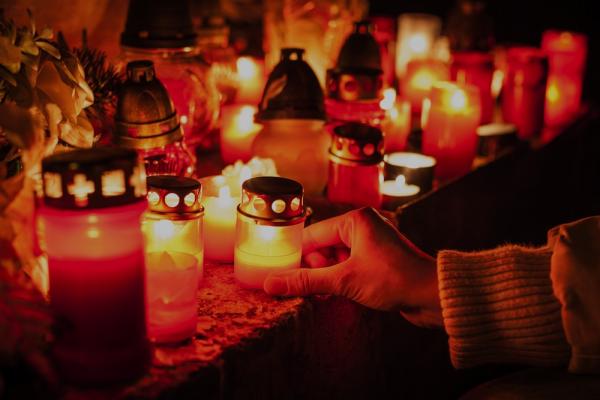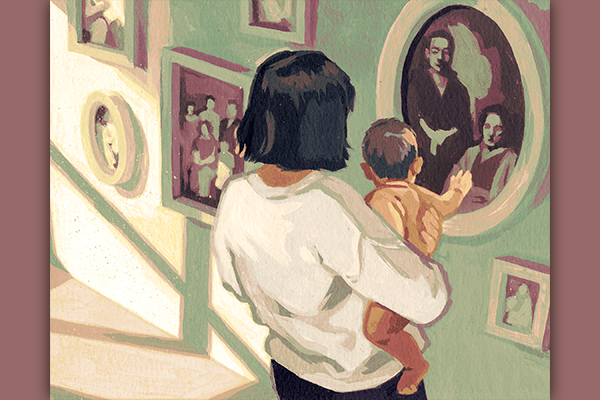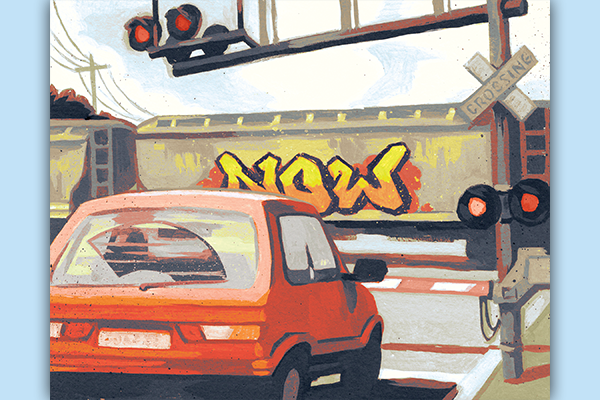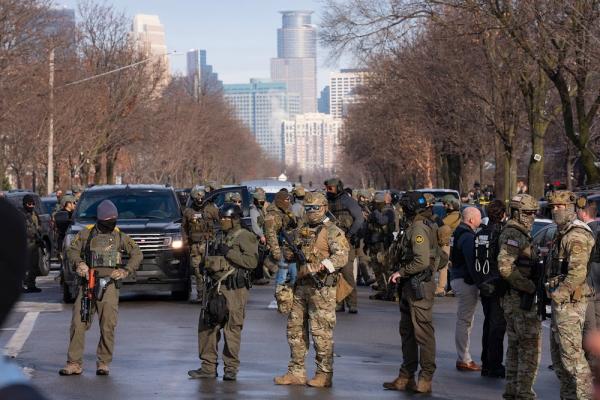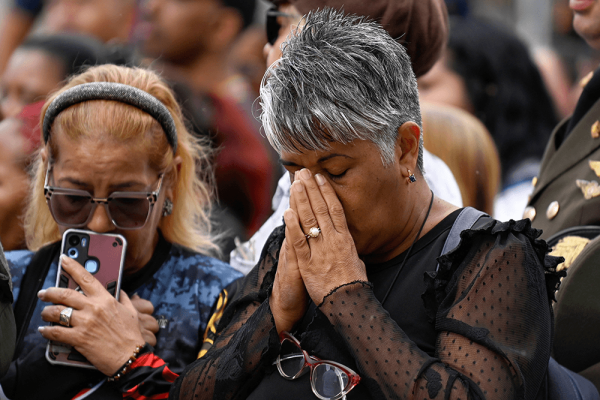Of all the social indignities a child can suffer, not celebrating Halloween is surely near the top. In addition to the already baleful list of oddities trailing my grade school self (fresh out of homeschool; in desperate need of braces; asking for more homework because I “liked it”), my panicked silence to the yearly question, “What are you dressing up as for Halloween?” — and my subsequent recusal from class before the festooned Halloween parade and glittering candy bonanza sugar rollercoaster that followed — burned my ears with everlasting shame.
But once safely away from judging peers, I actually never minded too much. I’d help give out candy at our door (“just getting some water from the kitchen” when kids my age came down the street), and tuck away a few treats for myself. The next morning, I’d walk downstairs in the post-Halloween dawn to a row of neatly-folded gold origami baskets, filled with candy and homemade chocolates and a little note from my mom — a verse about light, or resurrection, or great clouds of witnesses.
For years, All Saints' Day was to me a kept secret, a holiday I learned to love and never share. I had to try desperately to get away with casually not-celebrating Halloween. I definitely couldn’t tell anyone in my nondenominational evangelical conservative town that I celebrated saints.
But I did. I wore saint costumes, and sang songs about the “faithful and brave and true.” I proudly paraded down the aisle of my church with my St. Catherine of Siena cape lovingly arranged just so, impressed by my brother’s St. Martin of Tours armor (though I was too dignified to tell him. Saints don’t compliment each other’s outfits).
The truth that my parents taught — and my young self intuited, beneath the social anxiety and denominational ritual — was this: Christians have an additional story to tell. And while I have never found Halloween and All Saints' Day to be mutually exclusive, for Christians, the former without the latter is anemic.
Halloween, great fun as it is, is simply a prelude to the symphony.
Many churchgoing folk know the origins of Halloween — Hallowe’en comes from All Hallow’s Eve, a Christian commemoration that, like Christmas Eve, introduces the feast day following. As with most Christian feast days, there’s some argument over whether the timing and traditions around All Hallow’s Eve were originally adapted by the church from the pagan festival Samhain, the Celtic day of the dead that historically involved summoning the dead, dressing up in guises, and performing poems in exchange for food. (My parents, for their part, found it too cozy with the occult.)
Be that as it may, All Hallow’s Eve is intended as a whetting of appetite for the feast of All Saints' Day — a holy day shared by Catholics and Anglicans to commemorate heroes of the faith.
In America, our cultural knowledge of saints is limited: we think of the saints of Renaissance art, looking devout and fighting fantastical beasts; “Virgin Mary” apparitions on highway underpasses; cities on the West Coast whose names stand as reminders of virulently cruel Spanish expeditions in the name of Catholicism. The saints we think of are sanitized, or grisly, or suffering tricks of the mind. Above all, they are zealous.
But the tradition of All Saints' Day isn’t about celebrating impossible characters from a Fra Angelico or a Bosch. The answer to “why saints?” differs between denominations, but the day is universally acknowledged as a time to remember that all who claim the faith — past, present, and future — are part of the same body.
It’s a wise goal, if an awkward challenge. Every year, this day calls Christians to remember our context — to experience again the edges of our faith community as it stretches back 2,000 years and forward into the unknowable future.
There’s plenty of room for faith heroes in this landscape. But the Christians we honor — with the formal designation of “saint” or more generally as theologians, activists, and social justice leaders — are not always wholly admirable people, or even particularly special. They are prone to angst and anger, doubt and self-doubt, inanity and brilliance. The lives of these saints are, frankly, a continuation of the complicated characters in the Bible. And several — from the mystics and soldiers of the 900s to the social justice heroes of the 20th century — have lived in direct conflict with each other, pursuing theologies or ideologies or life work that are diametrically opposed.
It’s a challenge, sometimes, knowing who is worthy of celebration today. Certainly in election season, looking at some of the public officials who claim the Christian faith — and the odious implication that that’s whom we’re all in this together with — makes the belief in a “communion of saints” extremely hard to admit. To preach reconciliation with each other as sisters and brothers in the faith is at times to border on the absurd. Should we even bother?
For me, the answer is yes, because we must. We are a species in need of heroes, and there’s something reassuring about the fact that Christian heroes are not made of substantively different material than our fallible cultural ones we celebrate on Halloween, whether of political, late night talk show, or comic book variety.
For those in the church, what distinguishes saints is their spiritual curiosity, their encounter with a divine God, and the radical love they went on to live because of it. By claiming the faith, we’re claiming a kinship with each of those heroes who have gone before, and saying we’re in this together, too.
That extra ingredient, of infinite richness, I think warrants these saints their own day — and costumes, if you’re inclined — of recognition.
Every year around this time, the words of the hymn “For All the Saints” float back to mind:
O blest communion, fellowship divine! We feebly struggle, they in glory shine. All are one in Thee, for all are Thine. Alleluia, Alleluia!
These words are a reminder of promise, and a guarantee of struggle. At its best, the liturgy of All Saints represents the highest aims of humanity — to be kind, to love each other, and to approach, with honesty and wonder, what may be greater than ourselves.
The saints remind us that sometimes we get a little bit closer than we can reasonably expect. And they give us hope that perhaps one day we’ll be remembered — not for our heroic feats, but for loving a divine God, and each other, a little more fiercely than we thought we could.
Got something to say about what you're reading? We value your feedback!
